FB Vs FC Vs FD: How The Mazda RX-7 Evolved Over Three Generations

Pros
Cons
As the only car manufacturer to persist with rotary engines, Mazda has used this fantastically unconventional power source for all manner of different cars. Luxury coupes, tiny pick-up trucks, Le Mans-winning prototype racers - you name it, Mazda has lobbed a Wankel in it. And soon, a tiny single-rotor engine will be used as a range-extender in the MX-30 EV.
Amongst all that, though, there’s one brapping so-and-so that remains the most-loved amongst enthusiasts: the RX-7. Three generations of Mazda’s legendary rotary sports car were built, spanning a near-25-year production run with well over 800,000 built in that time.
Despite this, getting hold of one in the UK, particularly an earlier car, is easier said than done. Handily, though, Mazda UK has all three generations on its heritage fleet, each of which was wheeled out to sample at a press event celebrating the 30th anniversary of the 787B’s shock victory at the 1991 24 Hours of Le Mans. Three decades on, it remains the only car not powered by a piston engine to take the outright win at La Sarthe, so what better way to mark the occasion than driving its road-going counterparts?
Even though it means waiting around quite a bit in the pouring rain (unfortunately the UK’s brief early summer heatwave disappeared a few days ago), I’m determined to drive all three in order. And so, we start with a 1984 ‘FB’ first-generation RX-7 that spent much of its life in storage until Mazda bought it in 2017. As such, it hasn’t even hit 100 miles yet - there’s a slight tinge of guilt as I pull away and head out to add to this piffling figure, but cars are made to be driven. So, drive it I will.
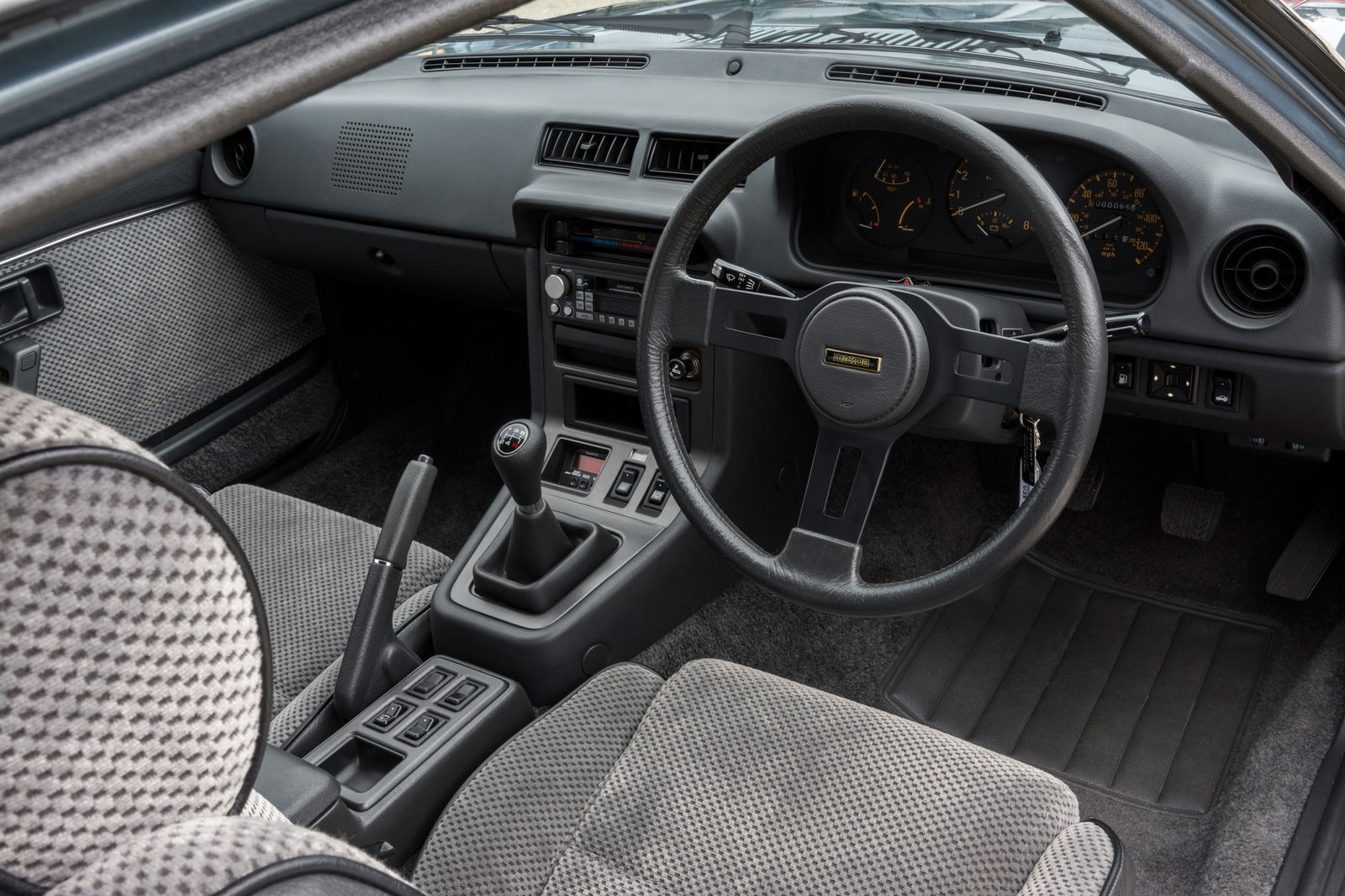
The unassisted steering makes navigating the tightly packed, Mazda heritage-themed car park a workout. Once we’re up to speed, there’s a noticeable dead spot in the middle and a rack that inevitably feels rather sluggish compared to a modern sports car. It’s just a little too old to feel particularly impressive dynamically, with soft damping giving a roly-poly sort of attitude to cornering.
The five-speed manual transmission, though, feels superb. It’s no wonder Mazda seems to be ahead of pretty much everyone else when it comes to satisfying short-throw gear shifts - the Japanese company has had loads of practice going back decades, it seems. Hooked up to this cog box is carburetted 1,146cc 12A twin-rotor engine. Some North American market FBs received a 13B, while in Japan there was a turbocharged 12A, but since this one has neither, the output is a modest 113bhp.
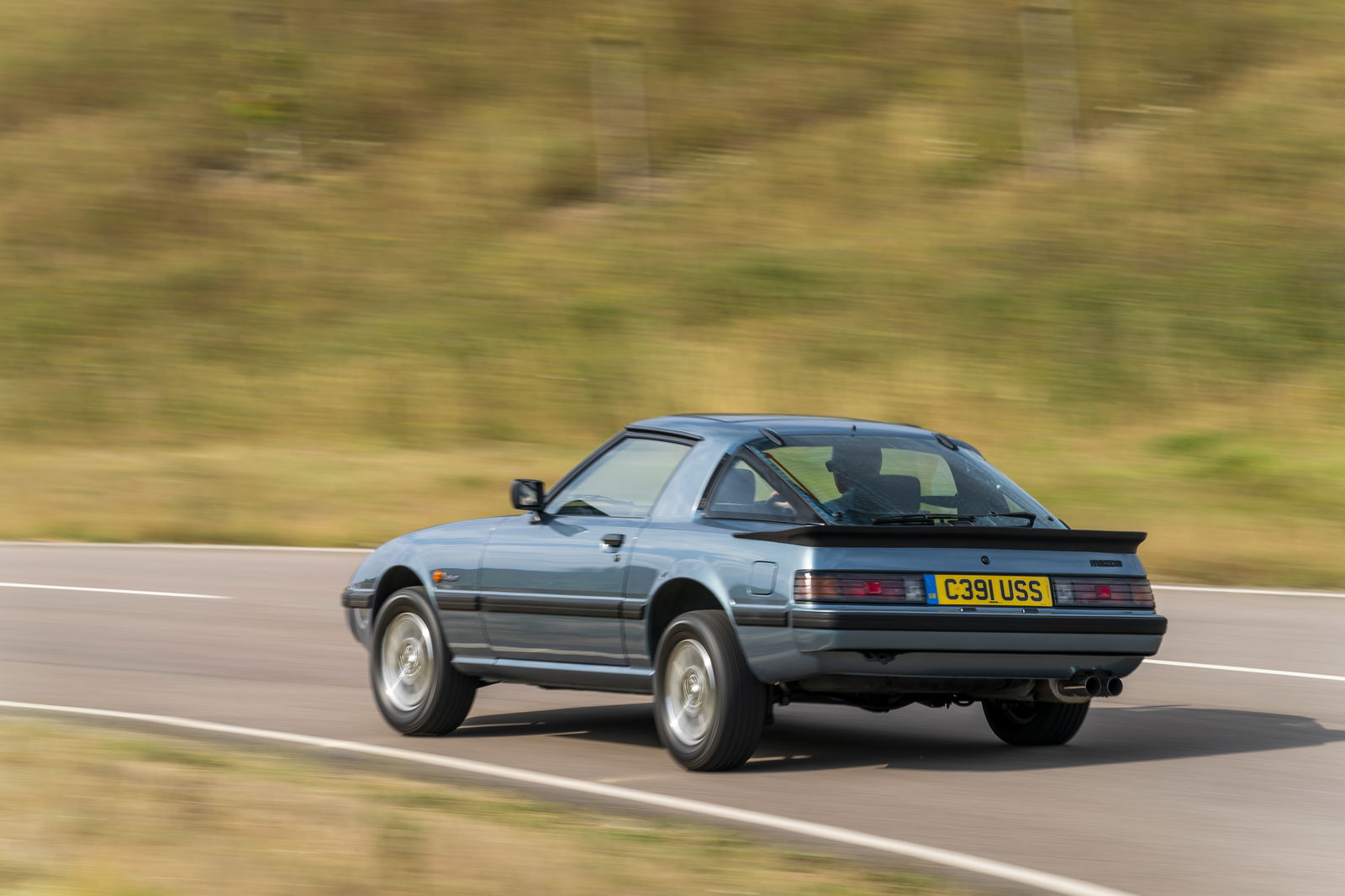
Weighing a little over a tonne, the first RX-7 has weight on its side, but even so, it doesn’t feel all that quick. 0-62mph takes around 9 seconds, and the top speed is 125mpg. The smooth engine lets out a strange, almost industrial kind of noise that’s largely drowned out by the noisy gearbox. Perhaps that’s why Mazda felt the need to add a loud buzzer that goes bananas as you reach the 7000rpm redline. Unfortunately, these are present in all generations.
It’s not a thriller to drive, but this RX-7 is still a lovely thing to biff around in. The cloth interior is an immaculate time capsule of 80s excellence, with piddly A-pillars giving a fantastic view of the world outside. The best view of all, of course, is to be enjoyed when you turn on the pop-up headlights.
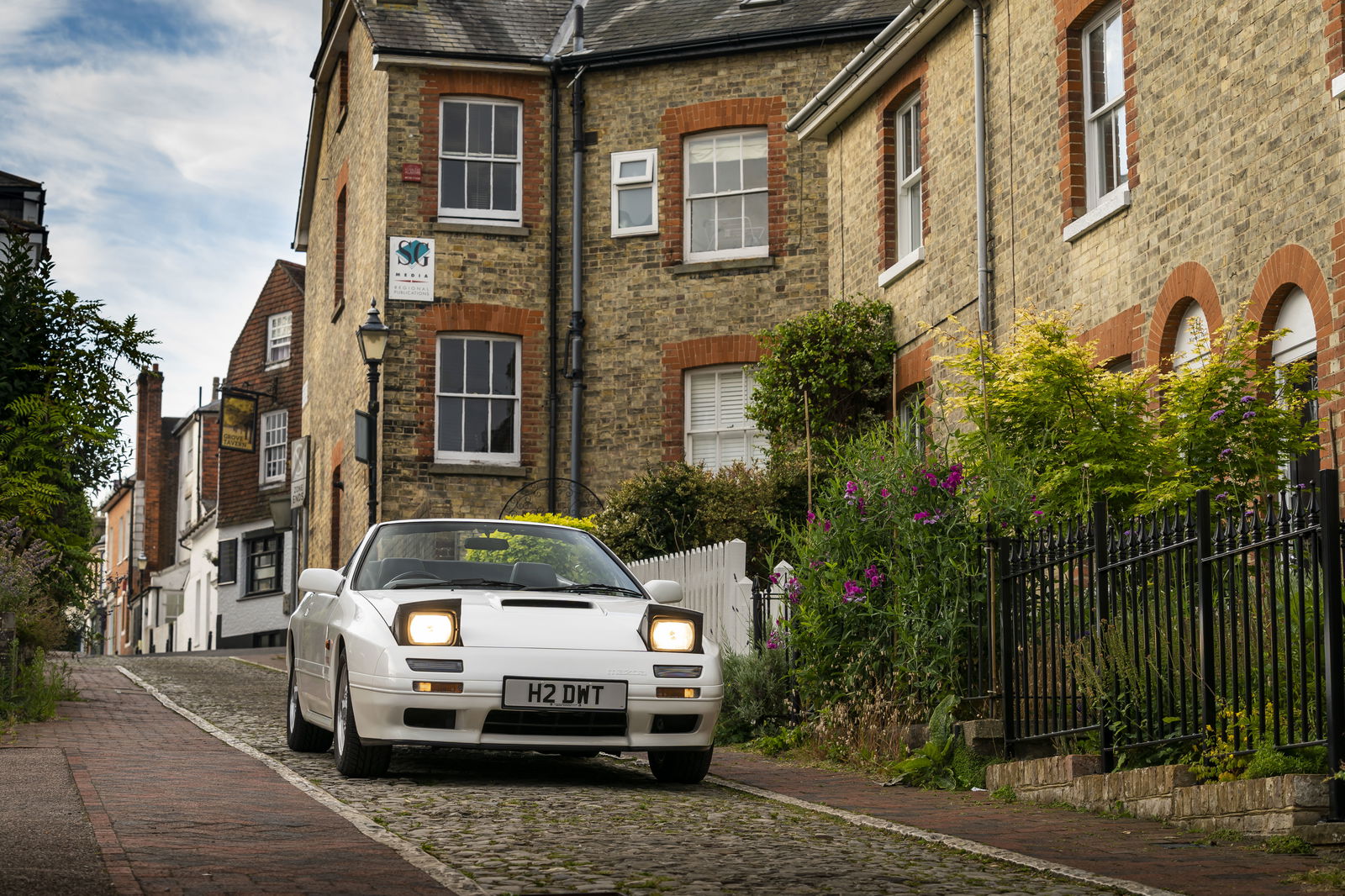
Back at the Jota, Mazda’s motorsport partners and our home for the day, it’s time to swap into the FC. It takes a few minutes to acclimatise to the bonkers interior, which eschews conventional steering wheel stalks for a variety of buttons, knobs and other weird appendages that sprout from the instrument cluster.
The steering is power-assisted this time, so leaving the facility isn’t so arduous for my feeble, pipe-cleaner arms. There’s no dead spot either, and it’s noticeably quicker. The steering isn’t the only thing that’s brisker - under the bonnet, this 1991 ‘Turbo II’ has a twin-scroll turbocharged 13B making around 200bhp.
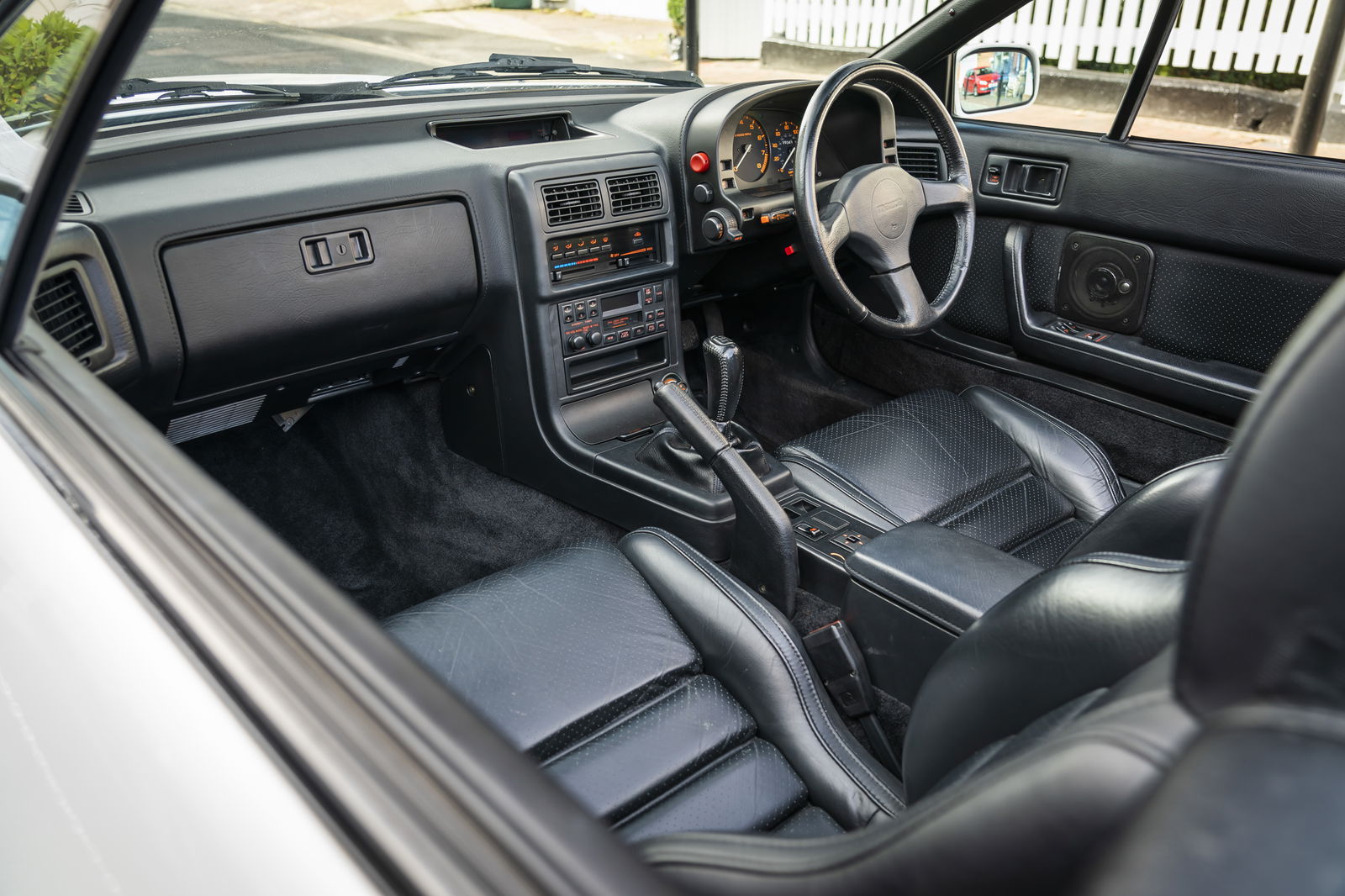
Yep, not far off double the output of the FB’s 12A, more than enough to make up for the weight gain between generations. 0-62mph comes up in around seven seconds, and sure enough, the FC feels punchy. Once, that is, the turbo comes on song after its moderate helping of lag.
So long as it’s spooled up and you’re beyond 4000rpm, this thing really flies. It also sounds a lot better than the FB, while retaining that silky smooth, almost entirely vibration-free delivery. Although still quite soft by contemporary standards it rolls less than the previous-gen RX-7, and even in these soggy conditions with that boosty delivery, traction is surprisingly good. The front end is decent, too, although I’ve no doubt it’d feel better still if I wasn’t in the less rigid convertible version.
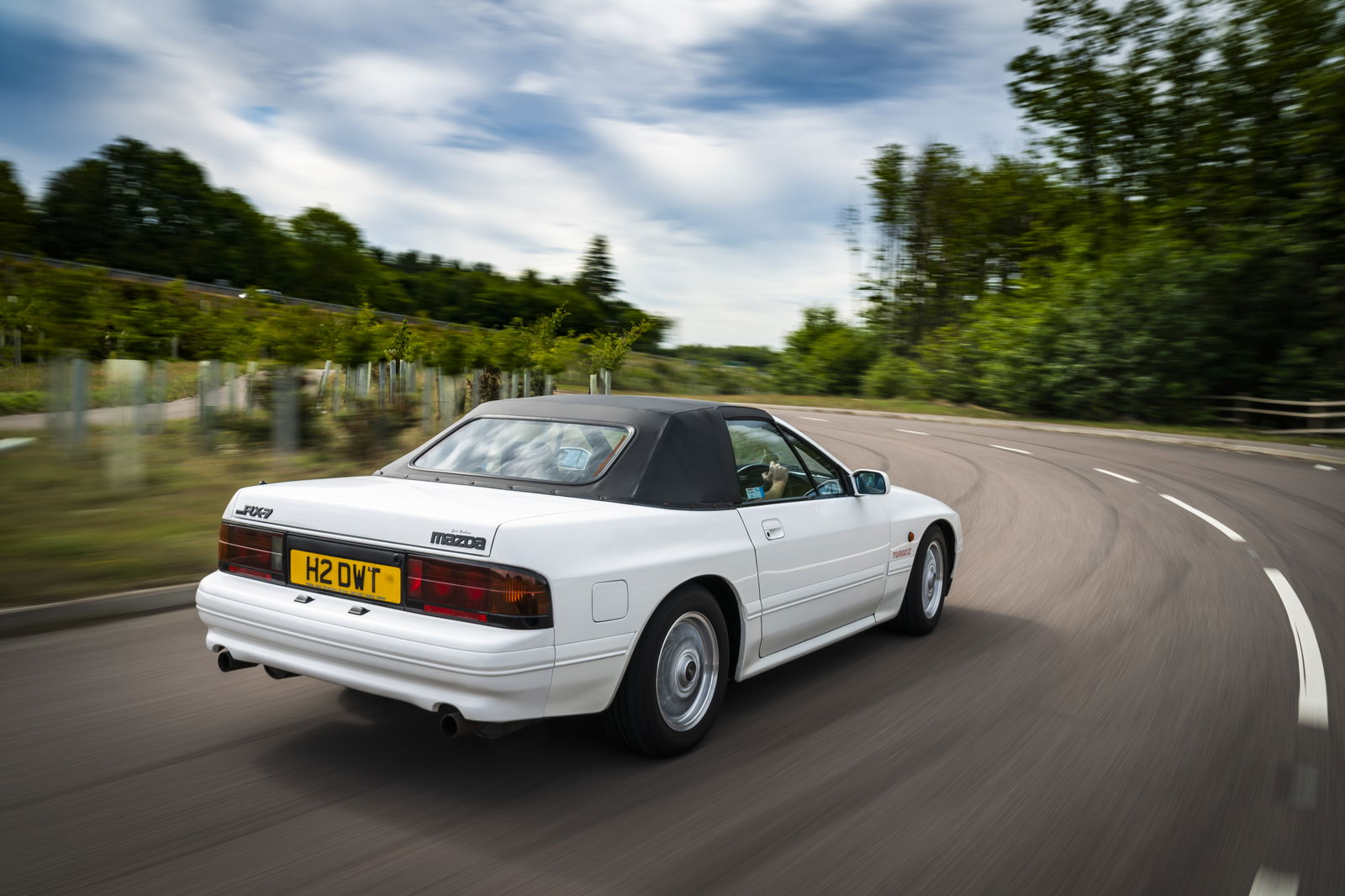
It’s not all good news, however. The shift from the five-speed gearbox, while still very good, isn’t as sweet as the FB’s. The pedal spacing makes heel and toe downshifts pretty tricky, too. But these are fairly minor quibbles, and with the strength of everything else here - including the continued use of pop-ups - they’re all entirely forgivable.
In switching to the FD we’re only moving forward a year, but since we’ve also shifted to a new generation and a completely new platform (the FC was an evolved FB underneath), the gap feels gargantuan in comparison. Behind the wheel, I’m presented with an oh-so 90s dashboard featuring a chunky console separating the front seats and a central stack neatly angled towards my side of the cabin.
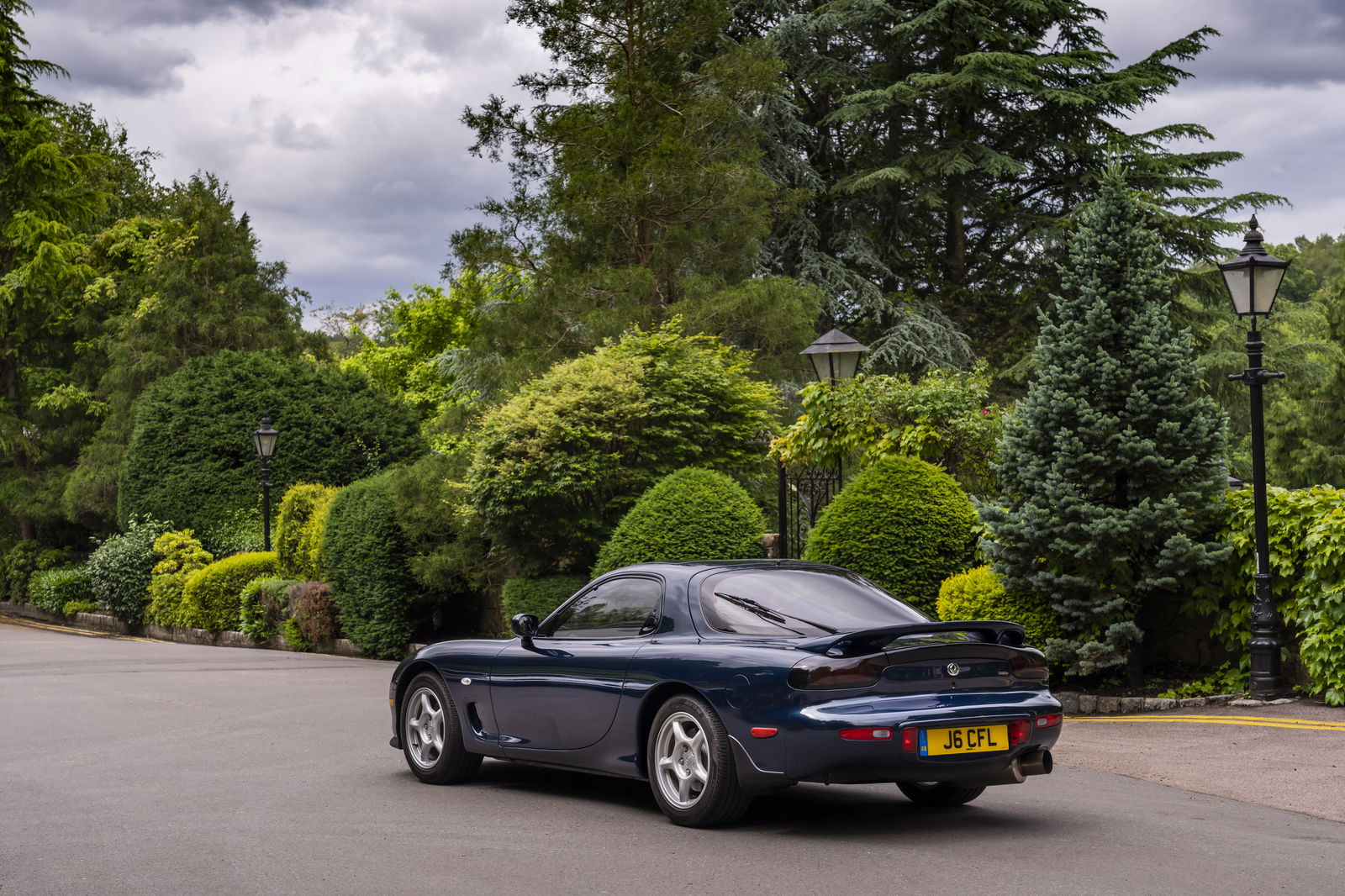
In front, we once again have a 13B, but this time it’s force-fed by an immensely complicated sequential twin-turbo system. One turbocharger is used at low revs, with the second coming into play after about 4000rpm as the first is phased out. The result is a noticeably less laggy character than the FC.
Get it over 5000rpm, and all hell seems to break loose as the RX-7 surges to its 6500rpm peak power point. Being an earlier car it develops 237bhp (this figure grew to 276bhp), and thanks to the furious delivery of the 13B plus a relatively modest weight figure under 1300kg, the FD feels properly quick.
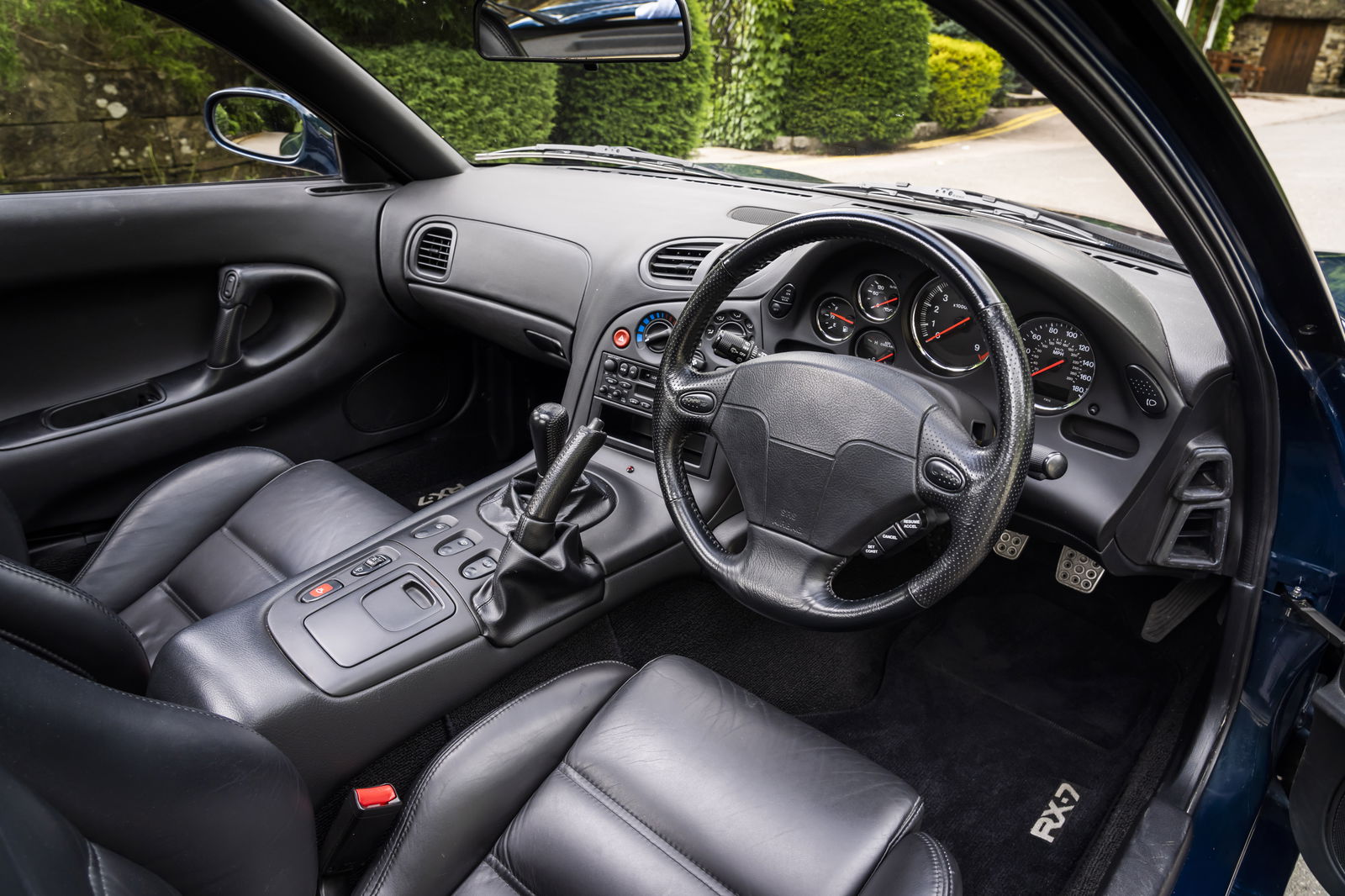
Even if you’d just got out of a modern sports car, I think you’d still find this thing impressive in a straight line. You might be left wanting for more noise, though. The soundtrack is the nicest of the three, but it’s still muted, and all the big-bore exhaust on this otherwise bog-standard example seems to do is add an annoying drone over the top.
The slick short-throw gearbox is the best of the lot, reminiscent of an NA/NB MX-5’s. And after experiencing the janky pedal spacing in the FC, the FD delights by placing them ideally beneath my tatty and fittingly 90s-looking Vans hi-tops.
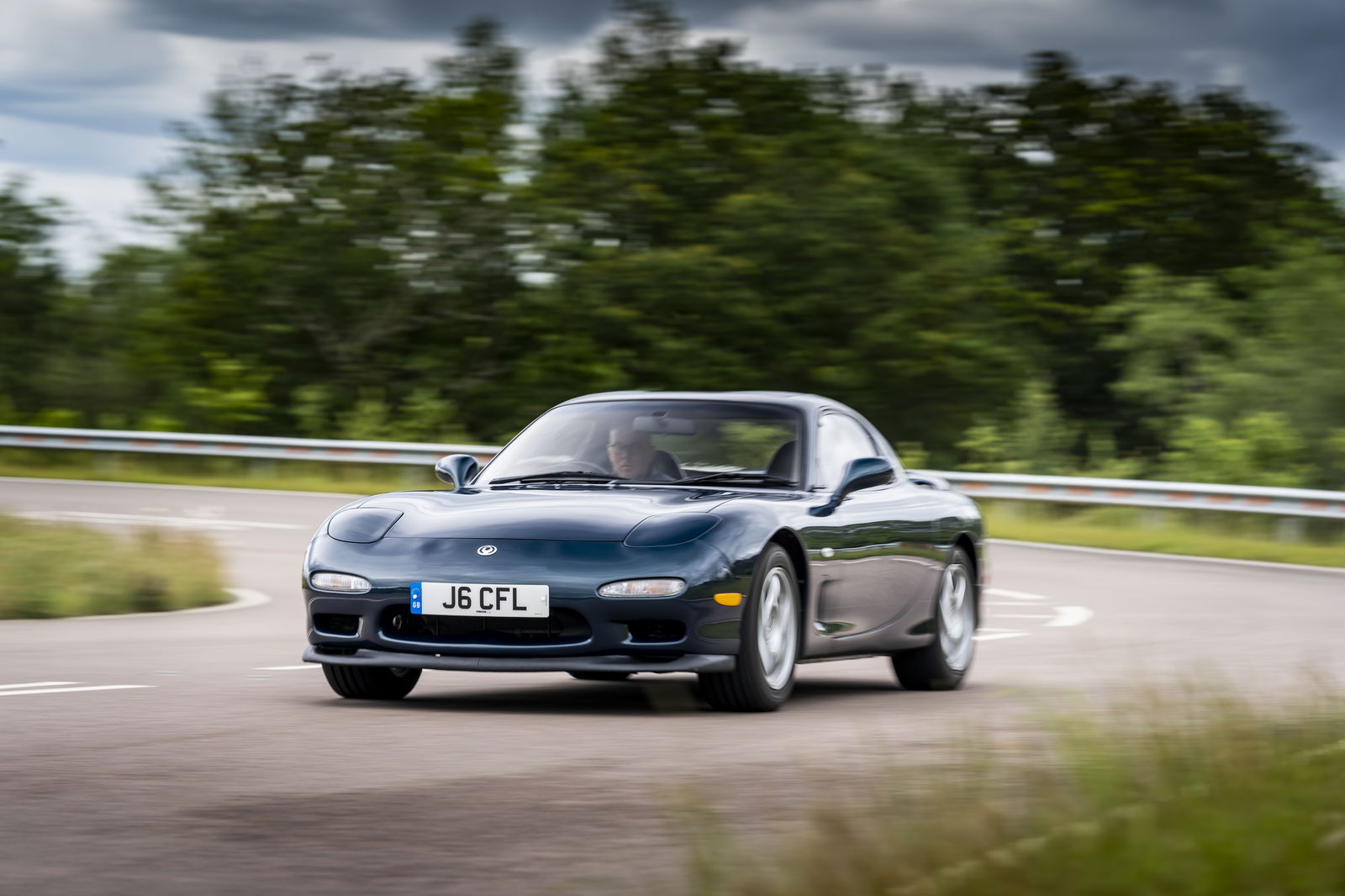
The steering’s a better weight than the overly-light, over-assisted setup in the FC, although it’s still not hugely quick. It’s by far the firmest of the three here - we’re much closer to contemporary levels of ride stiffness here, but it’s not excessive enough to make the FD feel uncomfortable or nervous. It tracks the road brilliantly, in fact.
When I got back in the other two, I was quite happy giving the keys back. As the tucked-away entrance of Jota looms into view this time, though, I’m half tempted to ‘accidentally’ miss the turning and bomb down the road for a bit longer. It’s the only one of the three to really get under my skin, arriving in this world during something of an automotive sweet spot. The FD is new enough to feel fast and nicely sorted even in standard trim, yet old enough to been chock full of the kind of character most new sports cars can only dream of.
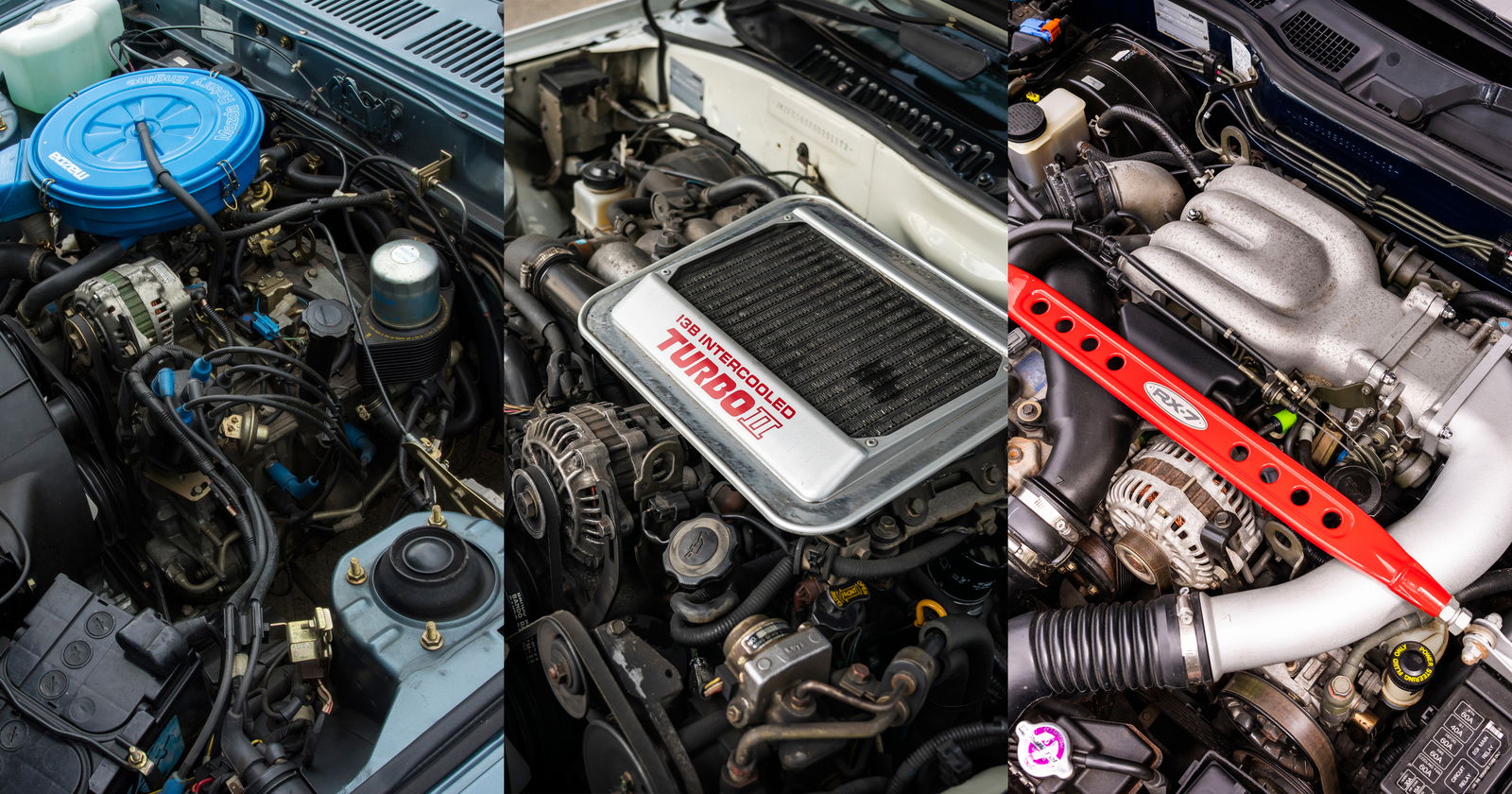
Does any of this make me want to buy one? I’d have to say no. These are cars that need to be pampered. And while people who don’t know what they’re talking about like to exaggerate the whole apex seal thing, you should only go for one of these if you’ve accepted that the occasional pricey rebuild is part and parcel of long-term ownership.
See also: 6 Fascinating Rotary Cars - That Aren’t Mazda
But there’s nothing else quite like an FD RX-7, and its kinda/sorta replacement, the RX-8, doesn’t quite capture the same magic. For those willing to put in the money and effort to keep an RX-7 going, the rewards are magnificent.
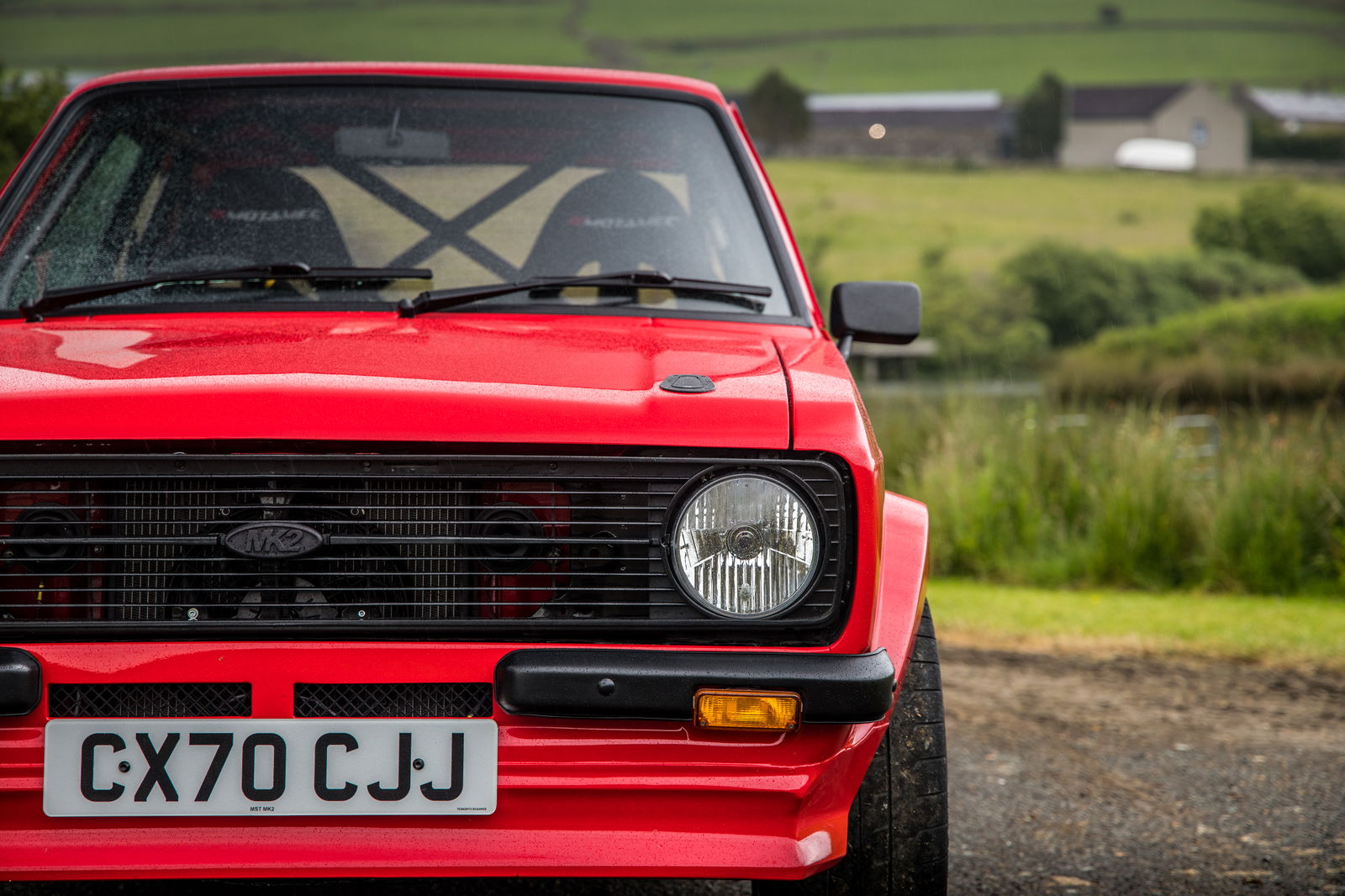
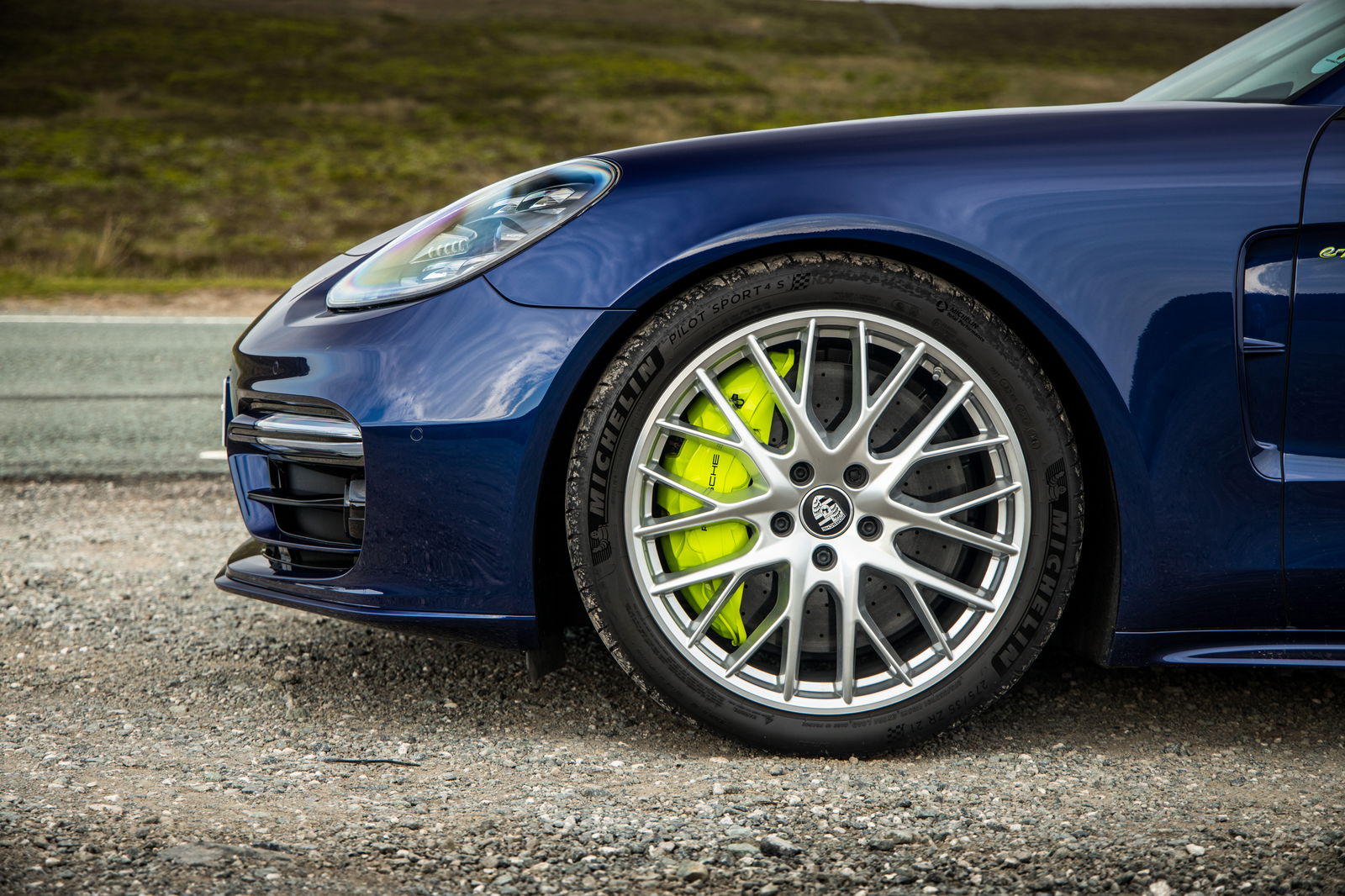

Comments
I can’t wait until people take out the single rotor engine from the CX-30 and swap it into something.
I think I’ve found a typo. In the FB part it says this:
“0-62mph takes around 9 seconds, and the top speed is 125mpg”
I thing that it meant to be mph, not mpg. Great article and really happy to see that those engines are still a great source of enjoyment :D